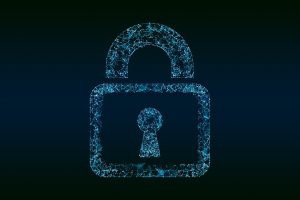
Zero Trust: The Future of Enterprise Security.
Introduction
In an era of evolving cyber threats, remote workforces, and cloud-based applications, traditional security models are no longer sufficient to protect enterprise systems. The classic “trust but verify” approach is no longer viable when attackers continuously exploit gaps in perimeter-based security.
The future of enterprise security lies in Zero Trust Architecture (ZTA)—a model where no entity is automatically trusted, and continuous verification is enforced. Zero Trust ensures that every user, device, and application must be authenticated, authorized, and continuously monitored before accessing critical systems or data.
As businesses face increasing cybersecurity threats, Zero Trust is quickly becoming the gold standard for enterprise security. In this article, we will explore why Zero Trust is the future of cybersecurity, how it works, and why businesses must adopt it in 2025 and beyond.
The Growing Cybersecurity Challenges in 2025
1. The Increasing Sophistication of Cyber Threats
Cybercriminals are leveraging Artificial Intelligence (AI), deepfake technology, and automation to bypass traditional security defenses. Ransomware attacks, phishing scams, and insider threats are at an all-time high, requiring businesses to rethink their security strategies.
2. The Rise of Remote Work and Cloud Adoption
With a globally distributed workforce and increased cloud adoption, businesses are facing challenges in securing data, applications, and access points across multiple environments. Traditional firewall-based security models fail to provide adequate protection.
3. Insider Threats and Unauthorized Access Risks
Nearly 60% of data breaches involve insider threats, including malicious employees, compromised credentials, or accidental data exposure. Without strict access controls and continuous monitoring, businesses are left vulnerable.
4. Regulatory Compliance and Data Protection Laws
Governments and industry regulators are enforcing stricter data protection laws like NIST 800-207, ISO 27001, SOC 2, GDPR, and FedRAMP. Organizations that fail to implement strong access controls and security measures risk hefty fines and reputational damage.
What is Zero Trust Security?
Zero Trust is a strategic security framework based on the principle of “never trust, always verify.” Unlike traditional security models that rely on network perimeters, Zero Trust enforces identity-based security, least privilege access, and continuous monitoring to secure enterprise environments.
Key Principles of Zero Trust:
✅ Verify Every Access Request – Every user, device, and application must be authenticated before access is granted.
✅ Least Privilege Access – Users and devices receive only the minimum access necessary to perform their tasks.
✅ Micro-Segmentation – Networks are divided into isolated segments, preventing lateral movement of threats.
✅ Continuous Monitoring & Analytics – AI-powered monitoring detects suspicious activities in real-time.
✅ Multi-Factor Authentication (MFA) – Enforces strong authentication beyond usernames and passwords.
✅ Encryption & Endpoint Security – Protects data at rest, in transit, and across devices.
How Zero Trust Works in Enterprise Security
A Zero Trust security model follows a structured approach to protect enterprise assets. Here’s how it works:
1. Identity & Access Management (IAM)
Zero Trust relies on strong Identity & Access Management (IAM) policies, including Multi-Factor Authentication (MFA), biometrics, and Single Sign-On (SSO) to authenticate users securely.
2. Network Segmentation & Micro-Segmentation
Instead of traditional flat networks, Zero Trust enforces micro-segmentation, isolating workloads, applications, and users to limit lateral movement of attackers.
3. Least Privilege & Role-Based Access Controls (RBAC)
Users and systems only receive the minimum permissions needed to perform tasks. This reduces the risk of unauthorized access to sensitive systems.
4. Continuous Monitoring & Threat Detection
Zero Trust environments integrate Security Information and Event Management (SIEM), AI-driven threat detection, and behavior analytics to identify and respond to threats in real time.
5. Endpoint Security & Cloud Protection
Devices, endpoints, and cloud workloads must adhere to strict security policies, ensuring that only verified and compliant devices gain access.
Why Your Business Needs Zero Trust in 2025
1️⃣ Prevents Data Breaches & Insider Threats – Zero Trust reduces unauthorized access and limits damage from compromised credentials.
2️⃣ Aligns with Compliance Standards – Ensures businesses meet ISO 27001, NIST 800-207, SOC 2, and GDPR requirements.
3️⃣ Secures Remote Workforces & Cloud Environments – Protects hybrid work models, SaaS applications, and multi-cloud deployments.
4️⃣ Reduces Attack Surfaces & Enhances Visibility – Micro-segmentation and continuous monitoring minimize security risks.
5️⃣ Supports AI-Driven Security Models – Uses machine learning & behavior analytics to detect anomalies before attacks occur.
How K2CyberTek Helps Enterprises Adopt Zero Trust
At K2CyberTek, we provide end-to-end Zero Trust solutions, helping businesses transition from outdated security models to modern, identity-based security frameworks.
Our Zero Trust Implementation Approach:
✅ Security Assessment & Gap Analysis – We analyze existing security policies, identifying vulnerabilities and compliance gaps.
✅ Identity & Access Management (IAM) Deployment – We implement MFA, SSO, and Zero Trust IAM policies to secure user authentication.
✅ Micro-Segmentation & Least Privilege Enforcement – Our team isolates networks, devices, and workloads, preventing attackers from moving laterally.
✅ Cloud Security & Endpoint Protection – We secure cloud environments and endpoints to ensure Zero Trust compliance across hybrid infrastructures.
✅ Real-Time Monitoring & Threat Intelligence – We integrate AI-powered threat detection tools to detect and respond to threats proactively.



